Kenya is considered a must-visit year-round destination for birding, and the many birdwatching places of Kenya across the country do not disappoint but deliver a diverse number of bird species.
The country boasts having at least half the total number of bird species in Africa at about 1060 different bird species.
Its myriad landscapes from mountains, hills, tropical forests, marshlands, open grasslands, lakes and coastlines coupled with a favorable climate create prime ecosystems for birds throughout the year.
With so much to offer, Kenya can be considered a bird watchers paradise, representing the diversity and beauty of African birds and wildlife in general.
For those planning to visit Kenya and engage in some exhilarating bird watching below are some sites you should begin with, and they are most known!
Updated 28/11/23, with 8 more birdwatching paradises in Kenya!
Birdwatching place number 1 in Kenya: Arabuko-Sokoke Forest
Situated in the North Coast region along the Indian Ocean, Arabuko-Sokoke is the largest remaining coastal forest in the Eastern Africa region (420 km2).
This forest is home to a number of endemic plants and birds, with some not being found anywhere else in Kenya other than here.
The site is one of the most important birding sites in Africa and is considered a UNESCO Biosphere Reserve with five globally endangered birds calling it home:
- Sokoke Pit,
- Clarke’s weaver,
- Amani Sunbird,
- Spotted ground thrush
- and Sokoke Scops owl
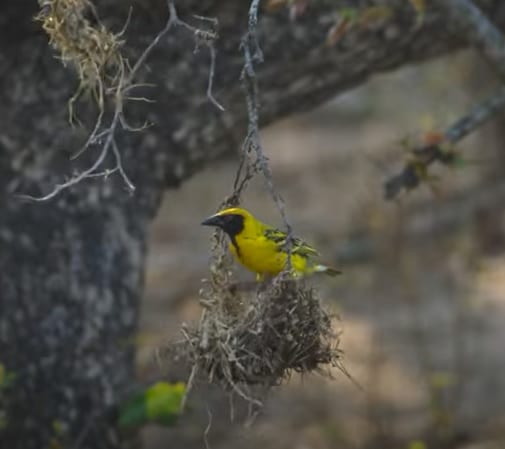
The forest is made up of mixed forest:
- pyometra ( a genus of tropical trees that are particularly important as a forest component in East, Central and West African tropical forests),
- and open miombo woodlands.
Other than the endangered bird species, the other bird species include:
- Fischer’s Turaco,
- little yellow flycatcher,
- chestnut-fronted helmet shrike,
- hornbill species such as silvery cheeked hornbill and trumpeter hornbill.
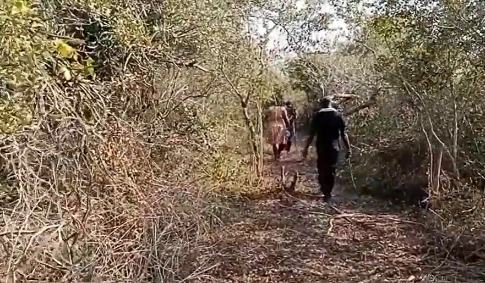
Arabuko-Sokoke forest is 560 km ( 347 mi) from the capital Nairobi and 120 km (74 mi) North of Mombasa (The largest city in the Coast region of Kenya).
One can take charter flights from either Jomo Kenyatta International Airport in Nairobi, or Moi International Airport in Mombasa to Malindi’s coastal town, which is just a 30 minutes drive to the forest.
Alternatively, from Mombasa take the B8 highway to Malindi, branch off at Gede town and drive for 1.6 km to the Gede forest station gate, the main point of entry; this drive takes about 2-3 hrs.
Birdwatching place number 2 in Kenya: Lake Naivasha
Lake Naivasha is a freshwater lake located in the Great Rift Valley, and is a spectacular birding site with more than 300 migratory and resident wetland bird species.
The lake has an abundance of plants, insects and fish that are a source of food for many birds, while the acacia forest surrounding the lake provides shelter.
The key species of birds to be found at the lake include:
- Wahlberg’s honeybird,
- white-fronted bee-eater,
- lesser black-backed gull,
- black-headed gull,
- Eurasian teal,
- Black heron,
- Great-crested Grebe
- and the Spotted Redshank.
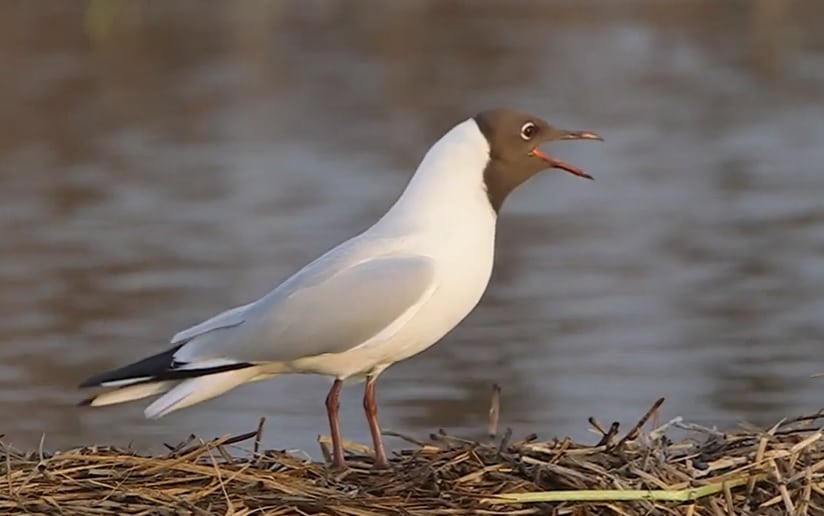
The lake has no surface outlet but is fed by the Malewa river, but it incorporates a volcanic crater; Crescent Island Lagoon which reaches depths of up to 17m (51ft).
Lake Naivasha is about 95km (59mi) from the capital Nairobi, and to get to the lake take the A104 highway from Nairobi, and just before the Naivasha turn off towards Moi Avenue.
From Moi Avenue, continue on the Moi South Lake road for approximately 4 km, on your right look out for the Hippo camp sign, as this is the entry point to the lake.
At the camp, you can ask about the birding spots around the lake, and any other information necessary.
Birdwatching place number 3 in Kenya: Lake Nakuru National Park
Lake Nakuru National Park surrounds Lake Nakuru which is a shallow and highly alkaline lake that is an important birding site in Kenya for both resident and migratory birds.
Gazetted as a bird sanctuary in 1960; a first for the country and Africa, today more than 400 bird species have been recorded at the lake.
Some species to look for include:
- the Greater blue-eared sterling,
- Hottentot teal,
- great white pelican,
- a variety of raptors such as
- the long-crested eagle,
- Verreaux’s eagle,
- martial eagle,
- and the lesser kestrel,
- African thrush,
- Grey crested helmet shrike,
- blue spotted wood dove,
- western heron and both the greater and lesser flamingos.
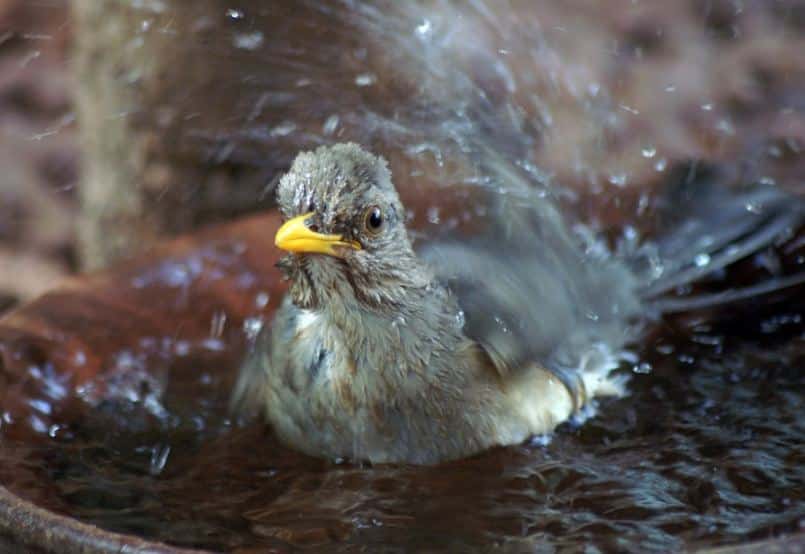
The lake is situated at the lowest point between the highlands in the East and the Mau escarpments in the West and is fed by four seasonal rivers and springs at its North-Easterly location.
The best time to bird watch is from the months of November to April when the birds are in full plumage.
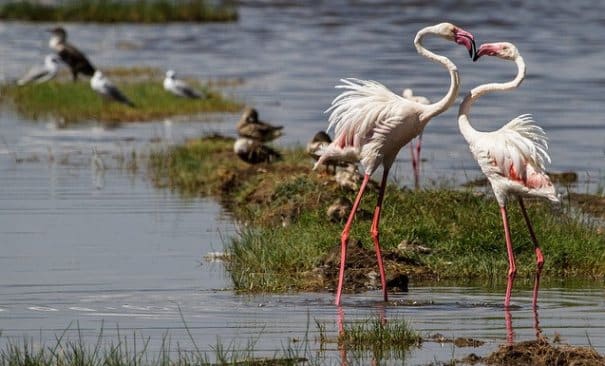
To get to the park take the A104 highway from Nairobi to Nakuru.
When you reach Nakuru, turn off the A104 onto Kenyatta Avenue and then onto Moi on the right.
Then travel South for about 1km and turn into the flamingo road on the left past Afraha stadium on the right and continue straight down to the main gate.
Birdwatching place number 4 in Kenya: Nairobi National Park
The Nairobi national park is a remarkable birding destination owing to the fact that it is the only game park within a capital city.
The park has a myriad of habitats ranging from seasonal swamps, rocky valleys, sparsely wooded plains, open grassland, and forest-lined rivers and streams, to a strip of upland forest along its Western boundary.
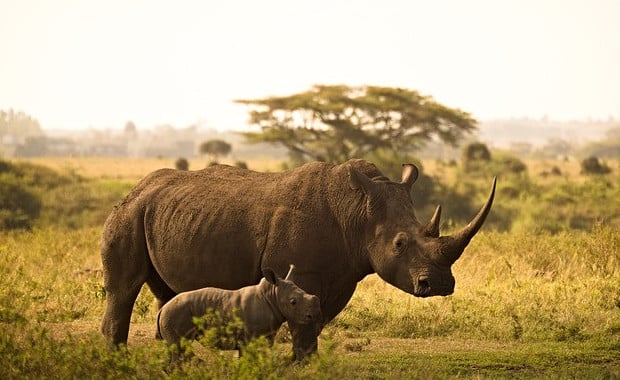
As a result the number of bird species found in the park number up to 500 species with more than 200 bird species being recorded in a single day during the migratory season from October to April when Palearctic migratory birds are present.
Some of the key bird species include:
- the Nairobi pipit,
- Jackson’s Widowbird,
- Sniffling Cisticola,
- White-tailed Lark,
- Brown Barked Woodpecker,
- Grey Crowned crane,
- white-backed vulture,
- Secretary Bird,
- White Backed Night Heron,
- Madagascar Heron,
- Shelley’s Francolin,
- African Finfoot with key migratory species including the Whinchat and the Red Backed Shrike.
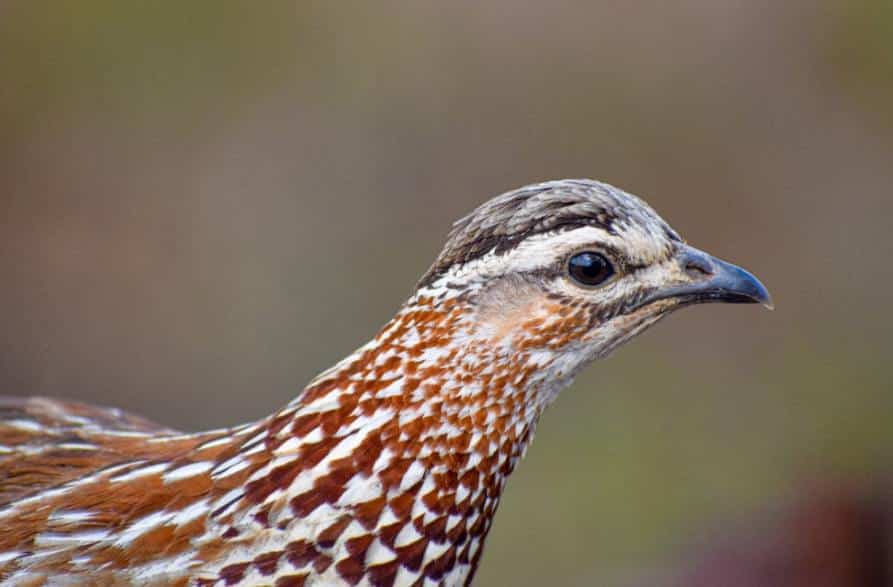
The park’s main entrance is just 7 km (4.3mi) from the city centre along Lang’ata road and opposite Lang’ata cemetery.
But there are other gates that can be used both for ingress and egress, these include the Lang’ata gate, to the West of Magadi road which is in a forested area, the Maasai gate to the South and the East gate off Mombasa road.
Birdwatching place number 5 in Kenya: Kakamega Forest
The only remnant of the once expansive Guinea-Congolese tropical rainforest, the Kakamega forest is a unique habitat and a must-visit for birders.
There are a lot of bird species that can be found in the forest, with some species being found nowhere else in East Africa.
Some of the unique, and rare species include:
- Kakamega Greenbul,
- Ansorge’s Greenbul,
- Toro olive Greenbul,
- blue-headed bee-eater,
- turner’s Eremomela,
- Chapin’s flycatcher,
- Southern Hyliota,
- yellow-billed barbet,
- Great Blue Turaco,
- Grey Parrot,
- African Crowned Eagle,
- and the Western Banded Snake Eagle.
To get to the Kakamega rainforest, take the A104 highway from Nairobi and drive to Timboroa about 250 km (155mi).
Continue past Timboroa town for another 10km (6mi) and turn left onto the C36 highway to Kapsabet town crossing the equator on the way, then onto the C39 road ( Stendi Kisa-Yala road) for about 19km (11.8mi).
And just after the Chepsonoi market turn right onto Murram road for 14km to the Isecheno Forest Station.
It being a rainforest, it’s always raining but avoid the wettest months of the year from April to August.
For a better birding experience, request a local guide at the Isecheno Forest Station for a small fee.
Birdwatching place number 6 in Kenya: Maasai Mara Game Reserve
The Maasai Mara is world-renowned for its great mammal migrations, sometimes dubbed one of the wonders of the modern world, but it also houses a diverse number of bird species making it a bird-watching paradise in its own right.
It is mostly made up of open grasslands, but also includes riverine forests along the Mara river, Talek and Sand River, wooded acacia and cliffs on the Oloolol escarpment side.
Some of the key bird species you should be on the lookout for include:
- the Rufous Tailed Weaver,
- Northern Black Flycatcher,
- Familiar Chat,
- Yellow Billed Ox-Pecker,
- Pale Wren Warbler,
- Karamoja Apalis,
- Long-Tailed Cisticola,
- Trilling Cisticola,
- Magpie Shrike,
- Golden Tailed Woodpecker,
- Southern Ground Hornbill,
- Bare-Faced Go Away Bird,
- Schalow’s Turaco,
- Western Banded Snake Eagle
- and Rufous Bellied Heron.
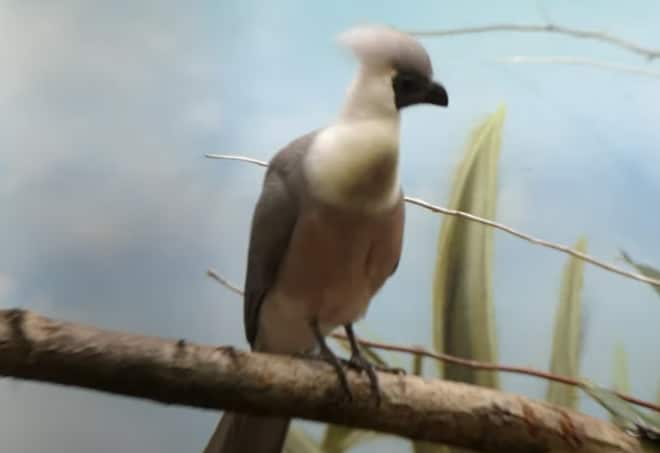
The main entrance into the park is through the Sekenani gate, and to get there take the A104 from Nairobi.
Before the Limuru road underpass branch onto the B3 road to Narok town, and 4km after Narok town turn left onto the C12.
On for about 12 km until you pass the Ewaso Nyiro river and the road bears South Easterly for about 86km to the Sekenani gate.
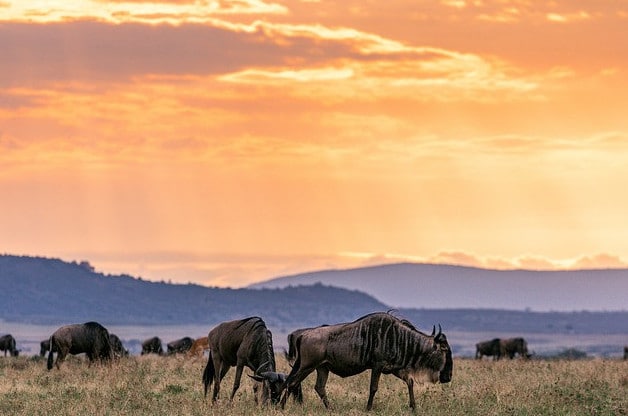
To note is that the road from Narok to the Sekenani gate, after crossing the Ewaso Nyiro River is murram and the going will be rough and slow.
The game reserve is usually crowded during the wildebeest migration months from July to September, with the camps, and lodges around the reserve fully booked and there are more vehicles than usual within the reserve.
7. Samburu and Buffalo Springs National Reserves
Samburu and Buffalo Springs National Reserves are in a semi-desert area in the North-central part of Kenya, with the Ewaso Ny’iro river providing a much-needed lifeline for all wildlife in the region.
The occasional rains transform the landscape into a green oasis, swelling the Ewaso Ny’iro river, bringing life and sometimes destruction with occasional flash floods.
The lodges around the reserve also feature well-manicured lawns that attract birds in numbers.
Some of the bird species you should be on the lookout for include:
- The Bristle Crowned starling,
- Magpie Starling,
- Black-Capped Social Weaver,
- Donaldson Smith’s Sparrow Weaver,
- Somali Crombec,
- Somali Bee Eater,
- Blue Naped Mousebird,
- Martial Eagle,
- Peregrine Falcon,
- and Pygmy Falcon.
- At this reserve, you’ll also get the chance of spotting the not-so-common Somali Ostrich.
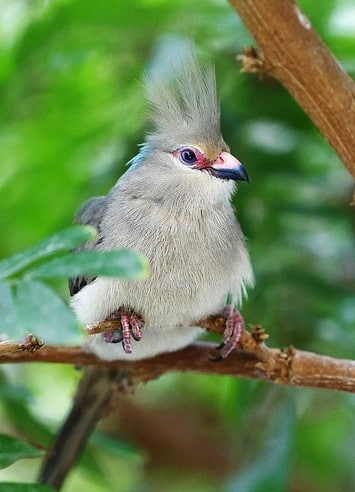
To get to the reserves by road, take the A2 from Nairobi and travel North, and to the West of mount Kenya.
A characteristic of the Northern country is the endless kilometres of plains, and wheat and canola fields on the lower slopes of mount Kenya.
Reach Timau and head onward towards Isiolo, then from Isiolo, it’s about 38 km through Archer’s post town to reach the main gate; Samburu National Reserve’s Archer’s Post Gate.
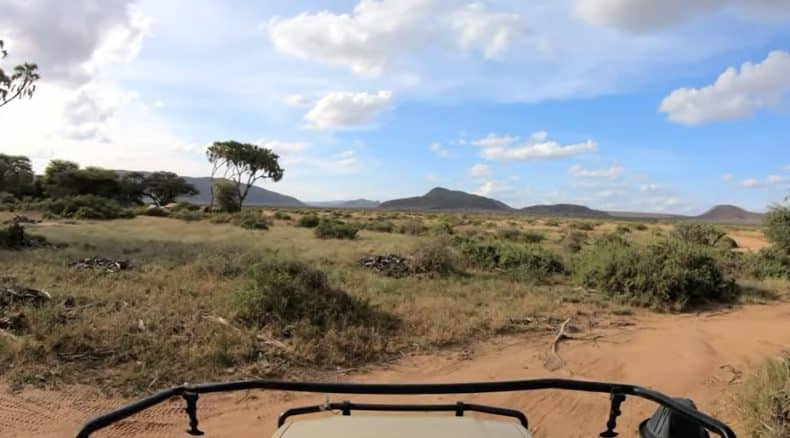
Both reserves are open throughout the year and managed by Isiolo County; entry fees give you access to both reserves.
8. Lake Baringo
If you are looking for the best birdwatching places in Kenya, Lake Baringo is worth a visit for sure!
Lake Baringo is a shallow lake with no visible outlet, and it is an important bird habitat and one of two significant freshwater lakes in the Rift valley at a size of about 168km2.
The area around Lake Baringo is arid and resembles that of Samburu apart from a difference in the geological formations and plants.
The lake, its islands, and lava cliffs along the Western Shore provide a home to several bird species with the number of bird species exceeding 500 species.
Key bird species to look out for include:
- the Northern Red Bishop,
- Northern Masked Weaver,
- Little Weaver,
- White Billed Buffalo Weaver,
- Bristle Crowned Starling,
- Red Fronted Warbler,
- Jackson’s Hornbill,
- Northern White-Faced Scops Owl,
- Verreaux’s Eagle,
- and Grayish Eagle Owl.
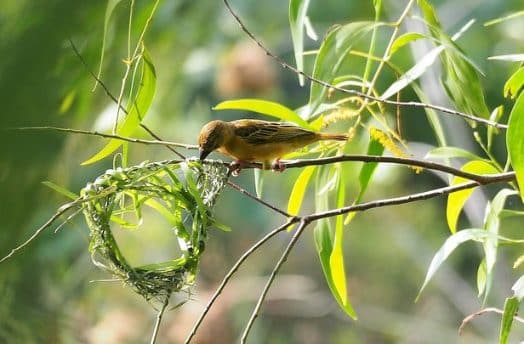
To get to Lake Baringo, from Nakuru town take the B4 road (Nakuru-Sigor) for about 96km to Marigat town.
After Marigat drive for about 15km then turn right onto the shore road and towards Kampi Ya Samaki.
To access the lake and its wonders you’ll have to pay a small conservation fee, also beware of animals like crocodiles when bird watching on the myriad of small islands on the lake.
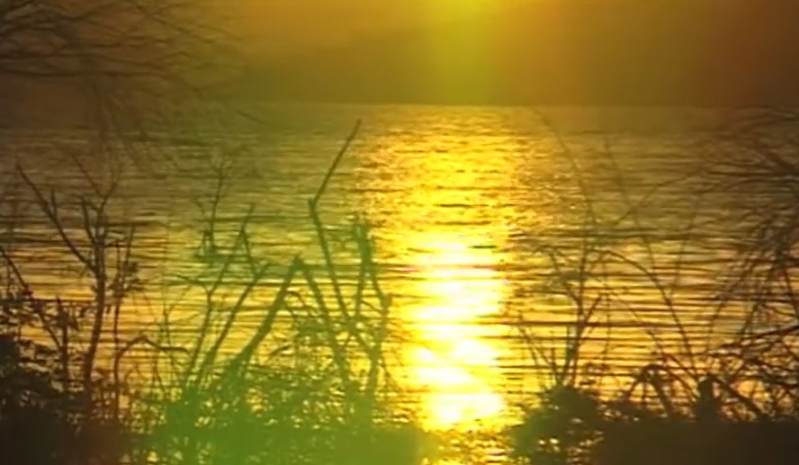
Also during the rainy season, the lake has a tendency to swell and submerge most of the islands and some of the seasonal rivers on the road from Marigat may be full so be wary when driving.
9. Amboseli National Park
A stunningly beautiful park that sits in the shadow of Africa’s highest mountain, Mt. Kilimanjaro in Tanzania.
Due to it being leeward of Kilimanjaro, a third of the park consists of a 10km wide dry bed salt lake which fills up seasonally with the rains.
Around the park, there are marshes that are wet year-round fed by underground springs, and other habitats include open grassland and acacia woodlands.
Some of the key species found around Amboseli include:
- Montague’s Harrier,
- Pallid Harrier,
- Black-Tailed Godwit,
- Grey Crowned Crane,
- Taveta Golden Weaver,
- Northern Pied Babbler,
- Collared Pratincole,
- Long Toed Plover,
- and the Rufous Bellied Heron.
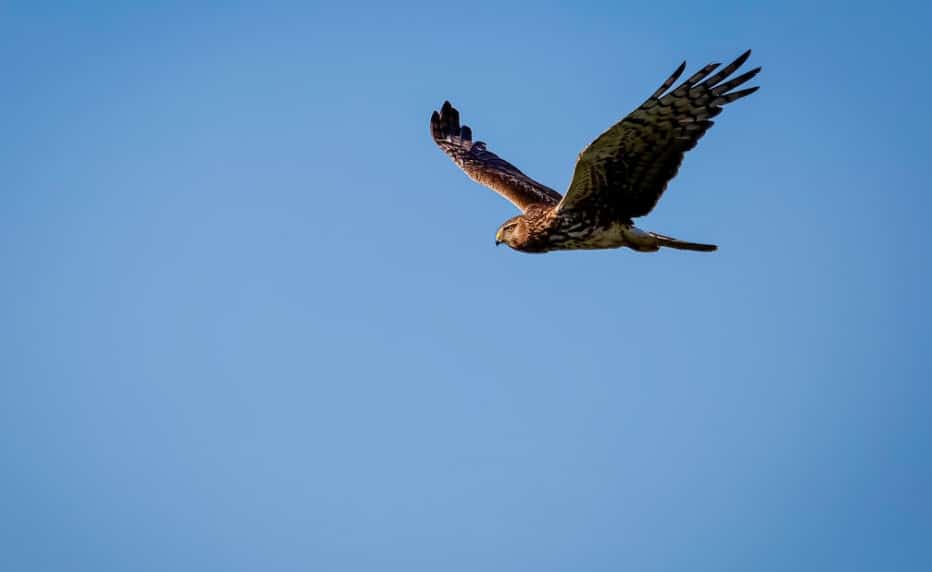
To get to Amboseli there are several routes that you can use.
The first one is using the road to Namanga town, 162km, then driving East using the C103 to the Meshanani Gate.
Alternatively, use the A109(Nairobi-Mombasa highway), and at Emali take the C102 for 59km, then turn right for about 20km before reaching the Iremito Gate.
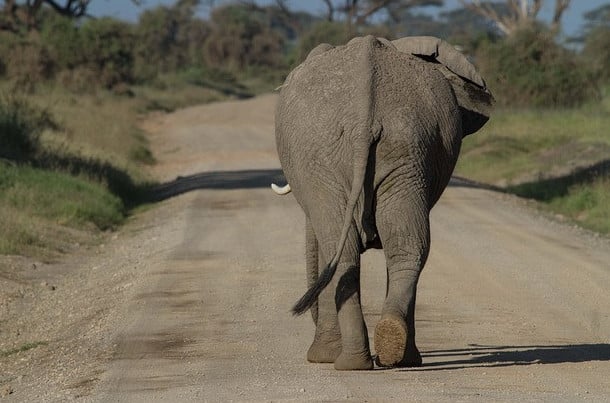
The best time to visit is right after the rains when the park’s wetlands are still full and migrant birds are visiting from October to April.
10. Midas Creek
Adjacent to Arabuko Sokoke, Midas Creek is one of Watamu’s lesser-known treasures.
Situated between Malindi and Watamu, it is a wide intertidal inlet full of mangrove trees and is an important location for passing and migratory winter waders.
In itself, it is an International Bird Area of world renown, and together with Arabuko Sokoke forms a UNESCO Biosphere Reserve.
The tides and fresh underground water provide a habitat and food for fish, crustaceans, shrimps, turtles and molluscs.
Some of the bird species to look out for include:
- Eurasian Curlew,
- Bar Tailed Godwit,
- Terek Sandpiper,
- Greater Sand Plover,
- Lesser Sand Plover,
- Crab Plover
- and Dimorphic Egret
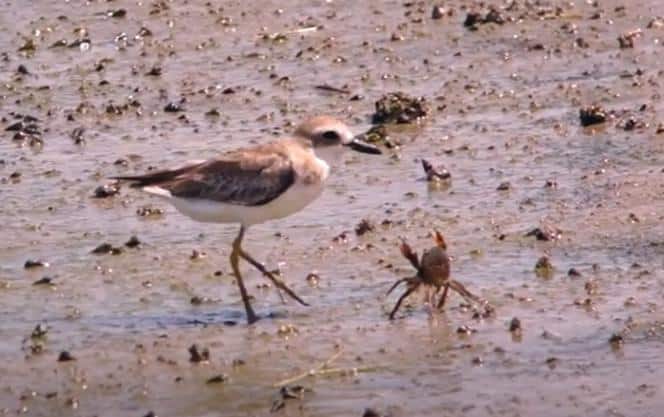
One can take charter flights from either Jomo Kenyatta International Airport in Nairobi, or Moi International Airport in Mombasa to the coastal town of Malindi which is 25km away.
Take the B8 highway, then turn left at the Sandy track with a sign for Midas Creek.
The best time to visit when warders and migrant birds are present is from September to March.
11. Meru National Park
The park sits along the equator, covers an area of 870 km2, has 14 rivers crisscrossing through it, and is located on the Easterly side of Mount Kenya in the Tana River basin.
As you head South towards River Tana the park gets progressively drier, and due to the many rivers in the park, much of it feels like a collection of long islands in between rivers.
These rivers though have lush riverine forests along their upper reaches and open swamp and marsh areas that provide homes for many species of wetland and river birds and birdwatching sites.
Some of the key bird species at Meru National Park include:
- Black Bellied Sunbird,
- Green-Capped Eremomela,
- Buff Bellied Warbler,
- Madagascar Bee Eater,
- African Orange Bellied Parrot,
- Palm Nut Vulture,
- Saddle Billed Stork,
- Cheeked Bee Eater,
- and Eurasian Roller.
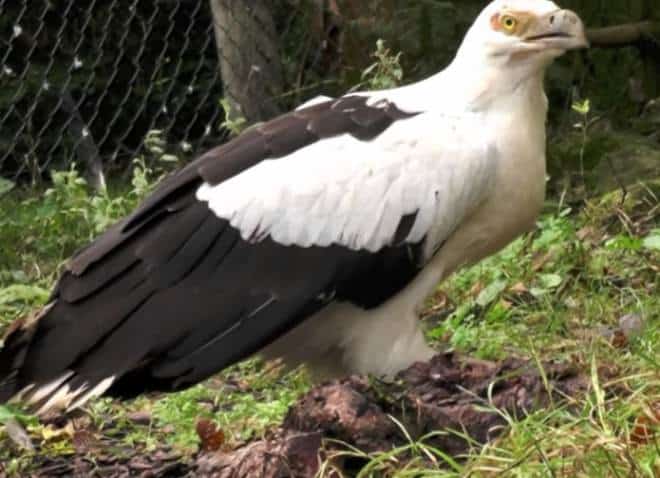
The nearest town to the park is Meru town which is 225km from Nairobi city.
From Meru town, take the D484, and 4km before Maua town turn left at the Meru National Park sign.
The park can be quite challenging during the wet season for 2wd vehicles, and also beware of tsetse flies.
12. Saiwa Swamp National Park
Saiwa National Park is the smallest National Park in Kenya with an area of just 3km2.
With more than 370 species of birds, this park has a lot of diversity in a very small area.
Gazetted in 1974, Saiwa National Park was formed as a protected area for the endangered Sitatunga antelope, but it also offers a myriad of habitats from swamps to forests that offer a home for the birds.
Some of the key bird species include:
- the Red-Headed Bluebill,
- Grey Winged Robin,
- Splendid Starling,
- Mountain Illadopsis,
- Double Toothed Barbet,
- Eastern Grey Plantain Eater,
- Ross’s Turaco,
- and Buff Spotted Flufftail.
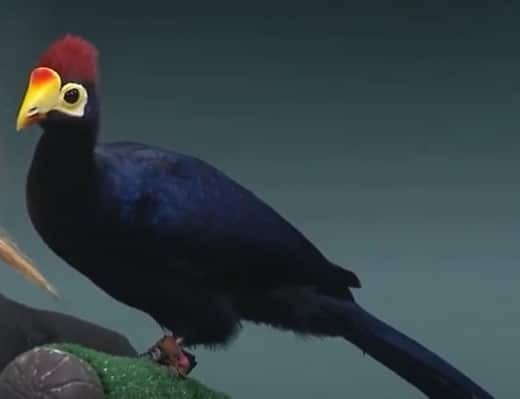
This green oasis is located in the Northwestern part of Kenya, and to get there, you have to get to Kitale town, the nearest major town to the park.
Take the A1 road from Kitale town to Kapenguria for 18km, turn right at the Kapsaina junction, and go on for about 4.5km on a murram road, then take a left at the sign and go for 500m to the park gate.
The Swamp borders the Sinyerere river and is approximately 6km long, and 600m in the widest section.
The park has a lot of trails crisscrossing it, and vehicles aren’t allowed within.
13. Lake Bogoria
One of the most spectacular lakes on the Great Rift Valley, lake Bogoria, is one of the most alkaline lakes with the Siracho escarpment rising on its East, and hot springs and geysers spread around the flatter Western shores.
With more than 480 species of birds, the lake Bogoria basin provides conducive habitat for the survival of these birds.
The lake is fed mainly by hot springs, the Waseges River, and seasonal rivers Mugun and Emos, and it has no outlet.
The lake is also full of the blue-green algae spirulina which gives it its greenish color.
Some of the key species to be found around the lake include:
- Greater flamingo,
- lesser flamingo,
- Silverbird,
- pallid Harrier,
- Lesser Kestrel,
- Cape Teal,
- and the Black Necked Grebe.
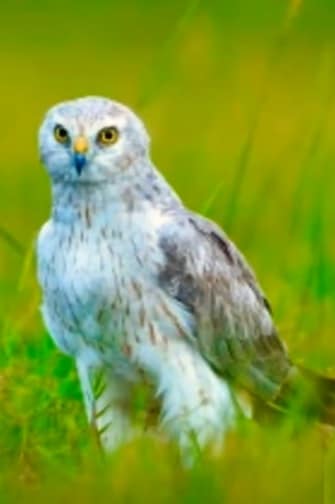
To get to lake Bogoria, take the B4 road ( Nakuru-Sigor road), and 3.5km before getting into Marigat town, turn right at the signpost for about 19km to get to the Loboi gate, the main gate into the Lake Bogoria National Reserve.
14. Hells Gate National Park
One of the marvels of the rift Valley, Hells Gate National Park was opened way back in 1884 by explorers Thomson and Fischers.
The park is one of the most visited in Kenya and has been the inspiration behind some of the most popular movies such as Tomb Raider and the lion king.
And a paradise for birdwatching sites!
It was an important breeding ground for the Endangered bearded vulture, and still attracts other vultures like Rüppell’s and Egyptian vultures.
Some of the key species include:
- the Northern White Shrike,
- White Crested Turaco,
- Mottled Swift,
- Common Buzzard,
- European Bee Eater,
- and Siberian Stonechat.
The park is located 100km (62mi) North West of the capital Nairobi and 18km (11mi) West of the nearest major town which is Naivasha.
There are no formal accommodations within the camp other than campsites.
Due to the absence of major predators such as leopards and lions, it is one of the only parks in Kenya where mountain biking is allowed.
15. Gatamaiyu Forest
A part of the larger Kikuyu Escarpment forest, Gatamaiyu forest covers 4,720 hectares of land of which three-quarters is indigenous forest, 8% exotic forest and the rest is scrubland, bamboo, and croplands.
The forest is a Key Biodiversity Area in Kenya, with 39 of the 67 afro tropical highland bird species and the best birdwatching sites occurring here.
The forest is home to some key bird species such as:
- the Abbott’s Sterling (only found in a few evergreen forests in Tanzania and Kenya),
- Abyssinian Chrimsonwing,
- Brown Chested Alethe,
- Evergreen Forest Warbler,
- White-Tailed Crested Flycatcher,
- Black Fronted Bush-Shrike,
- Fine Banded Woodpecker,
- and the Mountain Buzzard.
To get to the forest take the A104 from Nairobi, and one kilometer before the town of Kimende, turn left and through the underpass, and take a right at the junction.
Then at the Catholic church take a left and go straight following the electric fence of the forest, cross the Gatamaiyu river and at the top of the next hill take a left and proceed for about 1km to the Gatamaiyu Fishing station.
The forest is surrounded by intensive farming and extensive tea plantations, also beware of elephants within the forest and stinging nettles along the paths and trails.
16. Lake Magadi
Lake Magadi is found at the lowest point of the Rift Valley and is well known for the mining of the mineral Soda Ash.
Lake Magadi is also close to Lake Natron which is an important breeding ground for the lesser flamingo, also due to its highly alkaline nature, the lake is home to the highly specialized and vulnerable lake Magadi Tilapia, and algae.
Some of the species of birds you’ll find around the lake include:
- Von der Decken’s Hornbill,
- Taita Fiscal,
- Grey Wren Warbler,
- Crimsoned Rumped Waxbill,
- White Bellied Canary,
- Banded Parisoma,
- Northern Crombec,
- Chestnut Banded Plover,
- Straw Tailed Whydah,
- Red Fronted Tinkerbird,
- Grey Capped Social Weaver,
- and Grey-Headed Silverbill.
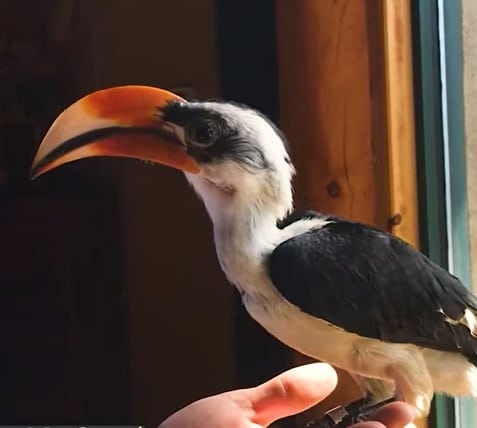
To get to lake Magadi, take the Langata Road and then branch off at the Bomas of Kenya Intersection towards the town of Ongata Rongai then Kiserian before branching off into the Ngong Hills.
Then ascend to Corner Baridi before descending all the way to lake Magadi.
The lake and its environs are managed by the Tata Chemicals Magadi company and in case you would like to visit the hot springs pay an entry fee at the Magadi Sports Club reception area.
17. Manguo Pond
Located just along the A104 and just over 1km wide and half as wide and surrounded by human activity, Manguo pond is a seasonal and shallow wetland area.
The pond is divided into three parts, a dry floodplain in the North often used for recreational activities such as football matches, bulrush and marshy areas to the South, and open water to the east.
The pond may on occasion dry out completely, particularly when the rains fail and are full during wet seasons.
Some of the bird species you’ll find include:
- the Green Sandpiper,
- Common Morhen,
- Blacksmith Lapwing,
- Great Egret,
- Black-Headed Heron,
- Common Waxbill,
- Augur Buzzard,
- Maccoa Duck,
- and White-Backed Duck.
To get to Manguo Pond, take the A104, for about 35km from Nairobi town and just after the Limuru overpass you’ll find the pond on your right. The best to visit is during the rainy seasons from April to May and also from October to April when the Palearctic migratory birds are visiting.
18. Kinangop Plateau
Kinangop Plateau and grasslands are at an elevation of about 2400m rising abruptly from the floor of the Rift Valley, with the plateau extending East towards the Southern Aberdares for several kilometers.
The plateau has been farmed extensively and the original swamps and tussock grass have been greatly reduced.
There are remnant forest patches along its Western slopes and the landscape still supports a variety of bird species not easily seen elsewhere.
Some of the key bird species to be found at Kinangop Plateau include:
- Sharpe’s longclaw,
- Golden-Winged Sunbird,
- Jackson’s Widowbird,
- Long-Tailed Widow Bird,
- Stout Cisticola,
- Levaillant’s Cisticola,
- Nyanza Swift,
- Black Winged Plover,
- Augur Buzzard
- and Grey Crowned Crane.
To get to Kinangop Plateau, take the A104 from Nairobi to Naivasha and at the exit to Naivasha turn right instead, onto the road for North Kinangop and Aberdare National Park.
Most of the land is privately owned, but there are several reserves purchased by a local group Nature Reserve and which offer spectacular birding spots at a small fee.
Which bird is the most beautiful in Kenya?
In my humble opinion, the Superb Starling must be one of the most pretty and colourful birds of Kenya.
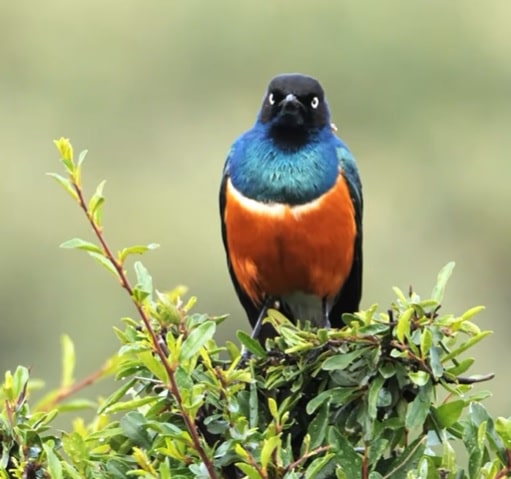
related article:
Are you thinking about buying binoculars to have a good look at all the magnificent birds of Africa?
My Final Conclusion.
I hope that you enjoyed this blog post on the best birdwatching places in Kenya!
If you have any more questions, please feel free to do so in the comment section below or on my social media channels or even Facebook group.
Don’t be shy to post your own travel pictures in my FB group either!
I wish you happy travels!
Kind regards,
Lizzy
I now have a YouTube channel as well!
YouTube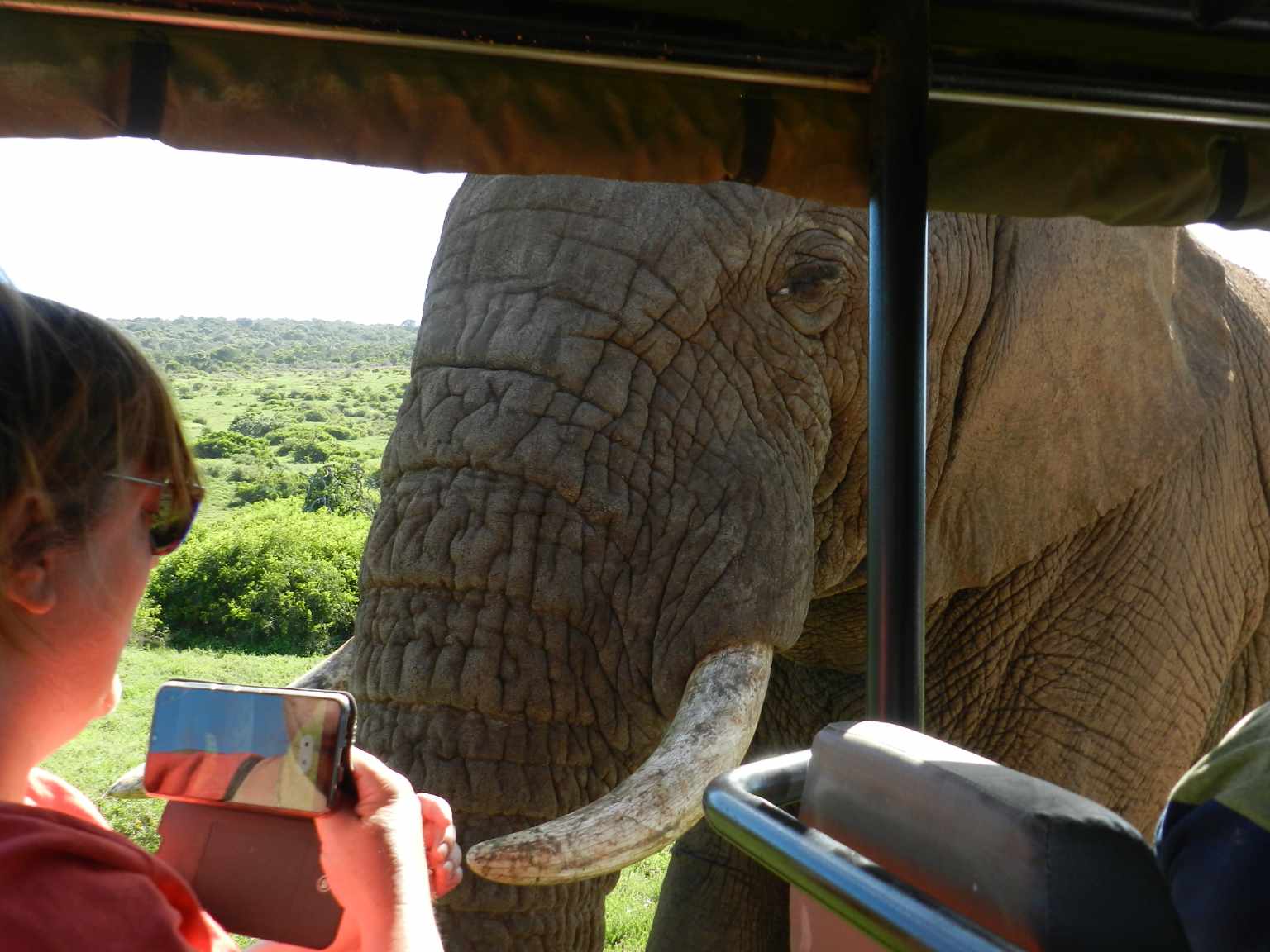
Hello Africa travellers!
Who am I? Well, the least you can say is that I am quite crazy about Africa, its nature, its climate, its culture, and more.
As a young woman in my twenties, I had already traveled to several African countries by traveling along in an overlander on my own and mostly camping ( or glamping ) and just fell in love with the diversity of it all.
So much, so that at the age of 26, I went back to university to study biology, which, unfortunately, I couldn’t finish because of health reasons (yes, I got sick from a tropical disease, oh cynicism). But this did not stop my dream of traveling back to Africa several times, and I still do.
My dream was back then to leave Europe and go study animal behavior, especially the elephants (sure, that’s every girl’s dream haha), but I am also very much intrigued by hyenas and other “ugly African animals“.
So, I “kind of” have a little bit of a scientific approach to my articles, when I write about African birds, for example. And most of all: the passion.
But life goes on, you move from one side of the country to the other, you get sick again and top it off with lower back problems, and before you know it, you are over 50 hahaha!
Now, I still travel to Africa, but take it a bit “easier” than the good old camping days, and stay in comfortable, yet affordable accommodations, together with my husband Wouter.
These are some of the countries I have traveled to: Kenya, Tanzania, Zanzibar, Malawi, Zambia, Zimbabwe, South Africa, Namibia, Botswana, Tunisia, and a little bit of Lesotho LOL .
While clearly not being African territory, but Spanish, I also visited Gran Canaria and Tenerife, and location-wise, I consider them “African”, because of their climate and nature, sue me :-p
The last trip I took was to South Africa in the year 2023, and it sure got the fevers for Africa back! From the Barberton mountains to the Drakensberg and the Southcoast, one month wasn’t enough at all to see the whole country, so we’ll be back! At ease and with a little bit more luxury than in my younger days haha!
I wish you happy travels!
Kind regards
Lizzy

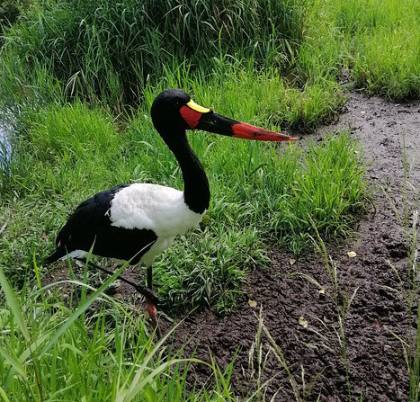
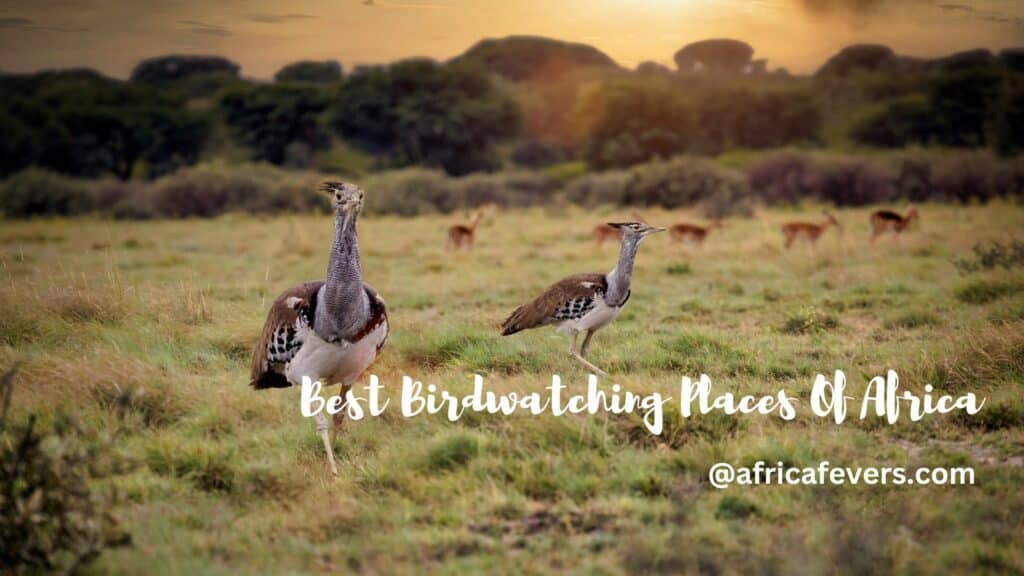
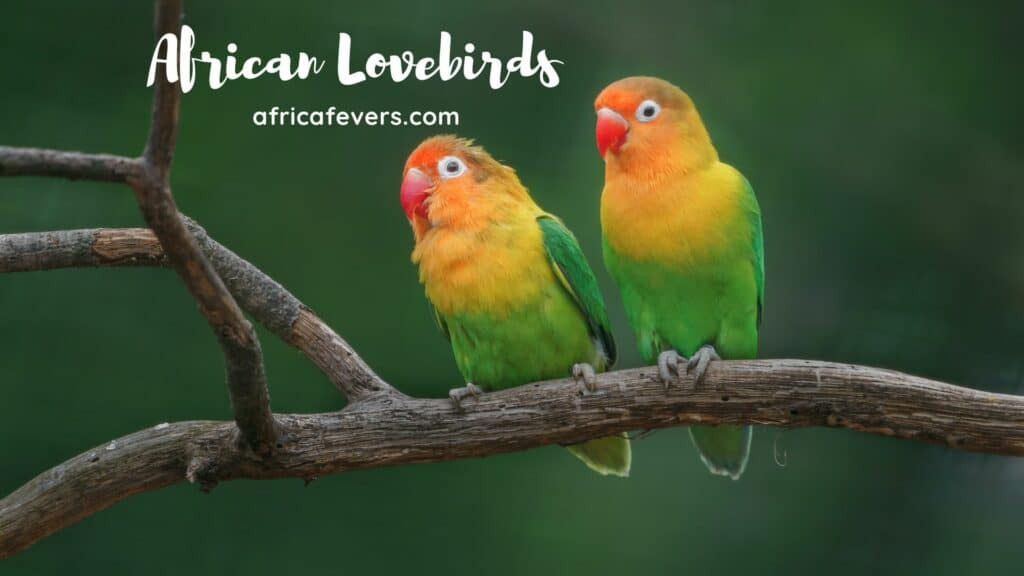
I never knew Kenya can be such an interesting place with one of natures most wonderful gifts. Birds are one of natures gift that one can get lost watching. From their various shapes, divers colours to their necks. They are such a wonderful creature. I look forward to seeing the African thrush, great white pelican and hottentot teal.
Hi Parameter!
Thank you very much for your comment and I hope you will al of these beautiful birds soon!
kind regards
Lizzy
Your article just gave me some envy to visit Kenya as fast as I can! I love the African continent and it’s a shame that I haven’t visited many countries. But Kenya is on the top of my wish list. I love all the parks with animals, they seem lovely and I’d like to see real animals like that for real, not just in a documentary. Good article! Hope you’ll post more about African countries.
Hi Angel!
Thank you for the compliments and I hope you will visit Kenya soon!
I wish you happy travels!
Kind regards,
Lizzy
Hey Lizzy!
I enjoyed reading your post and got a good insight of the beautiful places to visit in Kenya for Birdwatching. You’ve kindle a liking for birds in me and Kenya is the place to visit, come next summer. I will recommended this information to my friend who loves birds and taking pictures. How is the road network to these sites?
Information like this will help many people travel to Kenya for bird watching.
Thanks very much for this article.
Hi Kayamba!
thank you for the positive comment and I hope your friend will go birdwatching in Kenya soon! 😉
About the state of the roads, I would assume that for many of these, a 4×4 wheel drive is the best choice to use;-)
Kind regards,
Lizzy